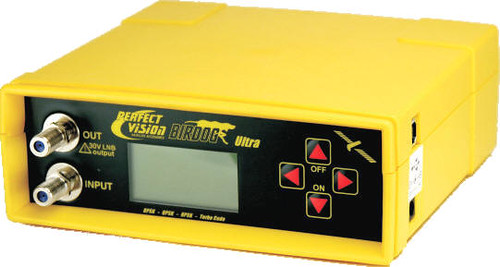The week’s news, courtesy of Bill McDonald…
Fox Pan American Sports to launch Spanish-language HD channel on Intelsat network.
[SatNews – 04/17/2009]
ASTRA signs reseller agreement with Towercom of the Czech Republic and Slovakia for its ASTRA2Connect broadband service.
[SatNews – 04/17/2009]
ATCi digital broadcast system combining MPEG4 and DVB-S2 designed for local channel and/or DMA extension enables cable operators to offer HD channels to all of their extended DMAs at great cost savings.
[SatNews – 04/17/2009]
Inmarsat completes acquisition of Stratos Global Corporation.
[SatNews – 04/16/2009]
Boeing ships IndoStarII/ProtoStar II satellite to Baiknour Cosmodrome for preparation for launch in May.
[SatNews – 04/16/2009]
Lockheed Martin is awarded multi-million dollar contract by SKY Perfect JSAT Corporation of Japan to build JCSAT-13, to be launched in 2013.
[PR Newswire – 04/16/2009]
Eutelsat moves Kabelkiosk digital cable platform to Eurobird 9A satellite.
[Satellite Today – 04/16/2009]
SpaceX tapped by Argentina’s National Commission on Space Activity for two launches aboard the Falcon 9 medium-to-heavy lift vehicle.
[SatNews – 04/16/2009]
Iridium announces certification of EMA Group’s BlueTraker Long-Range Identification and Tracking ship terminal to provide identification and tracking services over the Iridium satellite network.
[PR Newswire – 04/16/2009]
Sea Launch initiates countdown to launch of Telespazio’s SICRAL 1B satellite on April 20.
[SatNews – 04/16/2009]
WTA’s Members Forum on March 23 brought together executives of satellite carriers and teleport companies to discuss conflicts and suggest resolutions to prevent damage to the complex, profitable relationship between them – white paper to be published by WTA in second quarter.
[SatNews – 04/16/2009]
RaySat Broadcasting Corporation contracts with Intelsat to enable delivery of AT&T CruiseCast mobile TV service for family vehicles.
[Digital Facility – 04/15/2009]
SatLink acquires SES Astra 4A capacity to launch African DTH platform.
[Satellite Today – 04/15/2009]
TCS receives U.S. Army contract worth $14.9m to provide transportable ground terminals.
[Satellite Today – 04/15/2009]
Intelsat named Operator of the Year at 2009 SatCom Africa conference in Johannesburg, South Africa.
[SatNews – 04/15/2009]
Comtech EF Data wins $2.1m order for satellite communications equipment to upgrade existing battlefield systems to operate on Wideband Global Satcom system.
[SatNews – 04/15/2009]
The Internet Innovation Alliance, and the MSS & ATC Coalition of satellite companies, submit recommendations on how to best provide broadband to un-served and under-served areas in U.S. in hopes of earning broadband stimulus funding.
[Washington Business Journal – 04/15/2009]
China launches navigational satellite COMPASS, second in a series of as many as 30, to provide Chinese global positioning services.
[SatNews – 04/15/2009]
Canadian provider Juch-Tech signs contract with Viasat to expand VSAT services to Africa.
[Satellite Today – 04/14/2009]
China Satellite Communications Corp. is merged into China’s Aerospace Science and Technology Corp. as planned by the State Council, or Cabinet, of China.
[SatNews – 04/14/2009]
Second advanced EHF military communications satellite built by Lockheed Martin successfully completes environmental testing.
[PR Newswire – 04/14/2009]
Swe-Dish receives FCC license to operate its Drive-Away CCT120 on U.S. satellites.
[Satellite Today – 04/14/2009]
New Dawn Satellite Company, joint venture between Intelsat and South African investor group, awards launch contract for New Dawn satellite to Arianespace.
[SatNews – 04/14/2009]
Crawford Satellite Services enters Asian broadcast market, delivering All Sports Network, a live sports channel, in HD to Asian audiences.
[Satellite Today – 04/14/2009]
New U.S. rules allow U.S. companies to establish fiber-optic and satellite links to Cuba, and provide services directly to Cuban citizens.
[The Miami Herald – 04/13/2009]
PG&E considers beaming megawatts of solar power from space to earth; asks state regulators for permission to sign contract with stealth startup Solaren Corp. of Southern California.
[Wall Street Journal Business – 04/13/2009]
TerraStar and SkyTerra to launch three of largest commercial satellites in history this summer to support sat-link phones that will not be much larger than traditional mobile phones. Complete with 3G radios, they will offer integrated cell-phone/satellite-phone operation.
[fastcompany.com – 04/13/2009]
Vandals cut AT&T fiber, leaving thousands in Silicon Valley and throughout San Francisco Bay area without phone, internet, or wireless service for more than 12 hours, again raising question – how secure is U.S. communications network?
[cnet news – 04/13/2009]
Iranian Mullahs’ satellite program discussed in interview of Dr. Sepehr B. Ariannia of the Marze Por Gohar Iranian nationalist political party by Front Page Magazine.
[FrontPageMagazine.com – 04/13/2009]
Harris wins $150m contract to deliver satellite multiband radios to the U.S. Army.
[Satellite Today – 04/13/2009]
Galaxy Broadband Communications selects Encore’s BANDIT&trade line of industrially hardened routers for their satellite networks, systems, and solutions in Canada, to provide Galaxy customers end-to-end VPNs across both satellite and terrestrial networks.
[TMCnet – 04/13/2009]
NSR Report details current capacity issues facing Sub-Saharan Africa; while shortages have faced region in past two years, relocating capacity, and newly planned satellites threaten oversupply in the coming years.
[NSR report – Global Assessment of Satellite Demand – April 2009]
NSR Tele-Briefing April 29 to discuss recurring theme of the satellite industry’s relative strength during global economic downturn, offering its insights into the industry and whether the industry should be optimistic, and where a more realistic take may be warranted.
[NSR Tele-Briefing scheduled for 04/29/2009]








